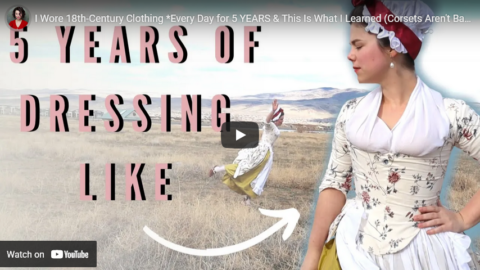… there is a tendency when popular culture represents the past to erase not merely the farmers, but most of the commons generally. Castles seem to be filled with a few servants, a whole bunch of knights and lords and perhaps, if we are lucky, a single blacksmith that somehow makes all of their tools.
But the actual human landscape of the pre-modern period was defined – in agrarian societies, at least – by vast numbers of farms and farmers. Their work proceeded on this cyclical basis, from plowing to sowing to weeding to harvesting and threshing to storage and then back again. Religious observances and social festivals were in turn organized around that calendar (it is not an accident how many Holy Days and big festivals seem to cluster around the harvest season in late Autumn/early Winter, or in Spring). The uneven labor demands of this cycle (intense in plowing and reaping, but easier in between) in turn also provided for the background hum of much early urban life, where the “cities” were for the most part just large towns surrounded by farmland (where often the folks living in the cities might work farmland just outside of the gates). People looked forward to festivals and events organized along the agricultural calendar, to the opportunities a good harvest might provide them to do things like get married or expand their farms. The human drama that defines our lives was no less real for the men and women who toiled in the fields or the farmhouses.
And of course all of this activity was necessary to support literally any other kind of activity.
Bret Devereaux, “Collections: Bread, How Did They Make It? Part III: Actually Farming”, A Collection of Unmitigated Pedantry, 2020-08-06.
March 7, 2022
QotD: Historical fiction and fantasy works usually leave out the vast majority of the people who did all the work
February 26, 2022
In The Highest Tradition — Episode 3
British Army Documentaries
Published 27 Oct 2021This third episode in a six-part series delving into the world of regimental tradition looks Gurkhas’ history and commitment to the British Army. They swear their oath of allegiance directly to Her Majesty the Queen and continue to revere “The Queen’s Truncheon”, which was awarded to them by Queen Victoria in recognition of their service during the Indian Mutiny.
© 1989
This production is for viewing purposes only and should not be reproduced without prior consent.
This film is part of a comprehensive collection of contemporary Military Training programmes and supporting documentation including scripts, storyboards and cue sheets.
All material is stored and archived. World War II and post-war material along with all original film material are held by the Imperial War Museum Film and Video Archive.
February 14, 2022
In The Highest Tradition — Episode 2
British Army Documentaries
Published 22 Oct 2021This episode includes the story of Millie the Mule and just why a rose is still eaten, raw, in one battalion’s mess. It also features the “White Helmets”, a team of motorcycle stunt riders. One team of retired soldiers has an average age of 74 years but they still meet up to perform stunts in front of their successors.
© 1989
This production is for viewing purposes only and should not be reproduced without prior consent.
This film is part of a comprehensive collection of contemporary Military Training programmes and supporting documentation including scripts, storyboards and cue sheets.
All material is stored and archived. World War II and post-war material along with all original film material are held by the Imperial War Museum Film and Video Archive.
I have to mention that the primrose hackle, once worn with great pride by the Lancashire Fusiliers is still worn by the Lorne Scots (Peel, Dufferin & Halton Regiment) of the Canadian Army Reserve.
February 12, 2022
Victorian Vinegar Valentines
Tasting History with Max Miller
Published 11 Feb 2022Hayman Sloe Gin: https://bit.ly/maxbottlescollection
Support the Channel with Patreon ► https://www.patreon.com/tastinghistory
Merch ► crowdmade.com/collections/tastinghistory
Instagram ► https://www.instagram.com/tastinghist…
Twitter ► https://twitter.com/TastingHistory1
Tiktok ► TastingHistory
Reddit ► r/TastingHistory
Discord ► https://discord.gg/d7nbEpy
Amazon Wish List ► https://amzn.to/3i0mwGtSend mail to:
Tasting History
PO Box 766
Burbank, CA 91503LINKS TO INGREDIENTS & EQUIPMENT**
Sony Alpha 7C Camera: https://amzn.to/2MQbNTK
Sigma 24-70mm f/2.8 Lens: https://amzn.to/35tjyoW
Home Oak Bar: https://amzn.to/37QGNdE
Industrial Pipe Liquor Shelves: https://amzn.to/37OR61S
Monin Raspberry Syrup: https://amzn.to/3HqFW3v
Nick & Nora Crystal Martini Glass: https://amzn.to/3L9zuzWRecipe
Bachelor’s Rose
Juice of a half a lemon
Juice of half a lime
Juice of half orange
White of an egg
25% raspberry syrup
75% Sloe gin
Fill glass with cracked ice.
Shake well, strain and serve.
1910 Jack’s Manual by J A Grohusko (Jacob Abraham)**Some of the links and other products that appear on this video are from companies which Tasting History will earn an affiliate commission or referral bonus. Each purchase made from these links will help to support this channel with no additional cost to you. The content in this video is accurate as of the posting date. Some of the offers mentioned may no longer be available.
Subtitles: Jose Mendoza | IG @ worldagainstjose
PHOTO CREDITS
Sloe berries: CC BY-SA 3.0, https://commons.wikimedia.org/w/index…#tastinghistory #valentinesday
February 9, 2022
In The Highest Tradition – Episode 1
British Army Documentaries
Published 18 Oct 2021[From the episode transcript – “Apart from discipline what emerges when you delve into British military tradition is that there’s no such entity as a British army. What you find is a confederation of regiments hopefully fighting on the same side all fiercely preserving their individuality by being as different from one another as possible.”]
First transmitted in 1989, this is the first episode in a six-part series that delves into the world of regimental tradition. This programme includes looks at the origins of Emperor Joseph Bonaparte’s chamber pot, a druid oration, and the story of a goat who escaped being eaten to become a regimental mascot.
© 1989
This production is for viewing purposes only and should not be reproduced without prior consent.
This film is part of a comprehensive collection of contemporary Military Training programmes and supporting documentation including scripts, storyboards and cue sheets.
All material is stored and archived. World War II and post-war material along with all original film material are held by the Imperial War Museum Film and Video Archive.
December 2, 2021
QotD: The quickening pace of change
One of the toughest things to get across to History students is the pace of change. Students hate it, but the “memorize this list of dates” approach actually helps — one can’t help but notice that your list of “the 20 most significant dates” for, say, the medieval period covers a millennium, while that same list for the Roman Empire covers maybe a century. Even there, though, most people could be forgiven for mistaking 50 AD for 150 AD, or even 250 AD (even archaeologists generally consider it a success if they can date something to within a century, I’m told).
But nobody would mistake 1790 for 1890, let alone 1990. A Roman of the late Republic (100 BC) could still get around ok if you time-warped him into the late Empire (300 AD). Time warp a guy from 1790 into 1890, though, and he’d think he was on Mars. (Zap him into 1990, and he’d think he’d died and gone to Hell). The pace of change accelerated exponentially starting in about 1400; by the Industrial Era it was a blur.
Which is why I’m terrified right now. We feel like change is happening at light speed. As a Historian, I can promise you — it’s at least Warp 6, and the dilithium crystals are nowhere near to overloading.
Severian, “Faster and Faster”, Rotten Chestnuts, 2019-02-01.
November 19, 2021
I Wore 18th-Century Clothing *Every Day for 5 YEARS & This Is What I Learned (Corsets Aren’t Bad!)
Abby Cox
Published 10 May 2020I wore 18th-century women’s clothing, all day, 5 days a week, for 5 years of my life. Over those 5 years, I learned *a lot* about my body, fashion in the 1700s — the good and the not so good, and how we can take these lessons and improve modern fashion.
***Trigger Warning: I do talk about body image in this video (as a reflection of my own, long, long journey with my own body & how wearing historical clothing has given me a different perspective on body image) which may or may not be upsetting for some. ***
*Ok, so not “every day” but you get the idea…😉
💌Business Inquiries *ONLY* abbycox@semaphorebrands.com
(This email goes directly to my management and not to me.)More Videos:
🎉🎉 Answering YOUR FAQs from THIS Video: https://youtu.be/SN3agbKZVP0
“Becoming an 18th-Century MEME LORD” https://youtu.be/a0pRE3uXWu8
“Historical Costumers and Their Hogwarts Houses” https://youtu.be/vxmRsc9Qj8M
Rachel Maksy – “Born in the Wrong Era” – https://www.youtube.com/watch?v=r5GAJ…A lot of these photos of me were taken by the lovely Fred Blystone. You can see more of his photography here: https://www.facebook.com/groups/13664…
Also, @Edwardian Tailor (https://www.youtube.com/channel/UCBSf…)
We like to assume that the people in the past are “stupid” (it’s normal human behavior), and one of the ways that we, as a modern society, do this is by judging the past for their fashion trends and practices. We’ve been taught to demonize corsetry (or in this case, stays) for being restrictive and a tool of oppression towards women, and take pride in our culture of diet and exercise, without considering the issues that can be found in our body-obsessed culture. We praise jeans and a t-shirt, as being “comfortable” but the insecurities that so many of us have about our bodies are put on display in our 21st-century uniforms. We take for granted our modern homes, and how that has made us lazy in dressing for the seasons, resulting (in part) the loss of various types of textiles and weaving technology. I learned a lot over those 5 years, including how to indulge in an Indian Buffet while wearing my 18th-century stays, and I’m excited to share my insights with you. Also, can we just discuss how stupid modern underwear is?? 😉
Images Used:
*Summer Dresses, 1783, Object Number – J,5.139, Asset Number – 79588001 © The Trustees of the British Museum. https://www.britishmuseum.org/collect…
*Sheer Cottton Mull Italian Gown, 1780s, The Metropolitan Museum of Art, 17.107.6a, b, https://www.metmuseum.org/art/collect…
*Kofta, 1760s-90s, Nordiska Museet, NM.0186311, https://digitaltmuseum.se/01102369100…
*Women 1790-1799, Plate 052, Fashion Plate from August 1796, The Metropolitan Museum of Art Library Costume Institute Fashion Plate Collection, https://libmma.contentdm.oclc.org/dig…
*Robe a l’anglais c. 1780, The Metropolitan Museum of Art, 1982.291a, b, https://www.metmuseum.org/art/collect…
*Attributed to Isaac Cruikshank, Cestina Warehouse or Belly Piece Shop
April 16, 1793, The Metropolitan Museum of Art, 59.533.475 https://www.metmuseum.org/art/collect…*Stays, The Metropolitan Museum of Art,
2009.300.3330a–d
https://www.metmuseum.org/art/collect…*The Bum Shop, Attributed to R. Rushworth (British, active 1785–86), July 11 1785, The Metropolitan Museum of Art, 1970.541.12, https://www.metmuseum.org/art/collect…
*Chemise, 1780-1800s, The Metropolitan Museum of Art, 2005.368 https://www.metmuseum.org/art/collect…
*Corset, 1880s, The Metropolitan Museum of Art, 2009.300.3497a–c
https://www.metmuseum.org/art/collect…——-
Music from Epidemic Sound:
“Gold Among the Sand”- Trevor Kowalski
“To Clarity” – Airae
“The Path to Innovation” – Airae
“Caffeinated and Motivated” – Airae
“Alice is on her Way” – Airae
“Cafe Laurent” – Medite
“In a Jiffy” – Moins Le Quartet
“Moonlight Night” – Gabriel Lucas———
Instagrams: https://www.instagram.com/abbyelyn
From the comments:
Abby Cox
1 year ago (edited)Hey Everyone! 👋🏻
Thank you all so much for taking the time to watch this video about my experience! I’ve noticed a lot of the same questions in the comments, so I want to take a minute to answer them here –
🎉UPDATE (Sept 27, 2020) – I’ve answered your questions about menstruation here: https://www.youtube.com/watch?v=iV2TgwjjhOE
🎉UPDATE (June 7, 2020) – I’ve taken the most commonly asked questions from the comments and have done a video to answer them! You can watch it here: https://youtu.be/SN3agbKZVP0– My stays (18th-century term for a corset) are from https://redthreaded.com/ – they’re a fantastic historical corset company that I adore. (and for the couple of you trying to call me out – my 100% hand-sewn, me-made, reproduction stays are so worn out that they’re in retirement, and just because I can make stays by hand doesn’t mean I have the time. I’d also rather support a small business that I believe in.❤️Finally, the gown I’m wearing in this video was cut to go over those stays, but if you’d like to see my hand-sewn reproduction stays in action you can buy the book I co-wrote here: https://www.american-duchess.com/book/american-duchess-guide) ☺️
– While I haven’t gone down the menstruation research rabbit hole (cause it is its own subject of study) I am going to do my best with limited access to primary source documentation (which is what I really need to be able to answer this question) to produce a video about what 18th-century women would do. I don’t know when this will be, but I will do my absolute best to answer this question, and if I can do some experimental archeology in the process, I will. 😎 (ravenclaws gotta ravenclaw…)
– Thigh chafing – so I think that varies from person to person. I never really had a lot of issues with it (and my narrow hips mean that I will never have a thigh gap) because my linen shift would always kind of end up between my leg and absorb the sweat. However, I know a lot of costumers who will wear split-crotched drawers because they find it more comfortable, even though drawers weren’t a thing in the 18th-century.
Ok! I hope this helps answer some of your questions! Thank you all so much for watching and engaging in this video. I really can’t tell you all how much I appreciate it! ❤️
November 15, 2021
Sarah Hoyt on what happens when the wheels come off
In the latest Libertarian Enterprise, Sarah Hoyt considers the supply chain chaos we’re seeing these days and reminisces about what happened in Portugal when the bakers went on strike, disrupting bread deliveries for most of the country:
Let me explain: to some extent this plan is always stupid because humans are resourceful. Even back in the seventies, in Portugal when the bakers kept going on strike (and to understand how much this touched the normal person, you have to understand that back then we were used to getting our bread delivered to the door before we woke up. Tie a bag to the back door, leave a note of what you wanted, wake up to crackling fresh rolls and baguettes. This is one the things I really missed when I moved here. Then I found bread machines, and made do.) The first couple of weeks were pandemonium and people were deeply unhappy because their routine — worse, their waking up routine — was disrupted.
And then things … changed. So, some people started making their own bread. Some people started making their own bread, other people heard and suddenly they were showing up at the back door and placing an order for the morning, then coming in the morning and knocking a certain way to receive your order. It was annoying, but life went on, and not everyone had to bake their own bread anyway.
Oh, and bonus, you didn’t have to pay taxes on the bread you sold. You were obliging your neighbors, and if they wanted to give you some money in return to help with expenses, it would be rude to refuse. (And since everyone was doing it, they couldn’t chase everyone, even in a tiny country.) Oh, and to understand this one, and the reason I use this expense, I don’t think people in Portugal had baked their own bread (Other than farmers making broa [Portuguese cornbread]) since before Roman times. Artisanal bread wasn’t a thing. But people found a way.
I do realize with so much of our manufacturing in China, and the supply problems, etc, it seems like the world is coming down on top of our heads.
But people find a way. Look, in Cuba, a tiny country, they’ve kept 1950s cars going all these decades. They might be repaired with washing machine parts, but they keep going.
The US is a huge country, with a ton more resources, and perhaps genetically (As we’re immigrants or descended thereof) more adaptable people.
We’re in the first shock, so not much being done to get around this cr*p inflicted on us from above. But in a month or two, probably before the anger reaches the level (alas) that #teamheadsonpikes comes out to play, we’ll adapt, improvise, overcome.
People are already buying direct from farmers. I have no idea how the Christmas gift shopping is going, because since the kids haven’t been little, we usually pick ONE interesting or meaningful thing for them, and anyway, Dan and I always want the same “A book and a music-vehicle (used to be a CD)”. This year, with worry over selling the house, etc. I haven’t even looked. I keep hearing it will be lean, but I suspect Americans will make more stuff/etsy will have a boom year. And life will move on. Heck, I know someone considering going into 3D printing to make those pieces that are stuck in containers or that China is not sending off, or whatever, to repair your car/washing machine/air conditioning. Yeah, copyright problems, but if you market it as a “Stop gap while you wait” and market to local repairmen? I bet it works.
The point is we’re not Portuguese or Cubans. Not a small country, easily stomped. Out in the heartland, people will go over, go under, get around almost by default.
November 9, 2021
QotD: Hollywood in the late Golden Age
In certain ways, Hollywood today is just like it was a half-century ago. It’s a company town, a plantation devoted to the manufacture of cultural commodities designed to please the largest possible number of people. Then as now, nearly all of the films produced there fit neatly into the pigeonholes of a limited number of highly stylized genres: gangster movies, costume dramas, romantic comedies, Westerns.
The main difference between then and now is that in the old days, such films were mass-produced on the assembly lines of the major studios. Americans of all ages went to the movies at least once a week, and they expected to see something different every time they went. Hence the studio system, which ground out product fast enough to meet the omnivorous demand. Except for the occasional Gone With the Wind, the modern Spielberg-style “event” movies that now dominate Hollywood filmmaking didn’t exist. You went to the movies not to see Spider-Man or Lord of the Rings, but simply to see a show. If the show in question was a Western or a mystery, that was good; if it starred John Wayne or Robert Mitchum, that was better. But nobody went out of his way to see a Wayne Western directed by Howard Hawks, much less a Mitchum mystery directed by Jacques Tourneur. You took what you got, and if what you got happened to be a Red River or Out of the Past, then you got lucky.
That’s why so many of the best films made in Hollywood in the Forties and Fifties were Westerns and mysteries. Precisely because they were commodities, their makers tended to be ignored by the front office. So long as your last picture turned a profit, however small, you got to make another one. If the movies in which you specialized were low-budget genre pictures for which demand was more or less constant, all that mattered was that you stay more or less within the accepted conventions of the genre, and the conventions of the Western and the mystery happened to be wonderfully well-suited to the artful telling of serious stories that were both entertaining and cheap to produce. The art, of course, was optional, and most such movies were as forgettable as a Law and Order rerun, but some of them were as good — and as serious — as a movie can be.
Terry Teachout, “What Randolph Scott Knew”, American Cowboy, 2005-12-23.
October 28, 2021
Identifying victims over 40 years later
In Wednesday’s NP Platformed newsletter, Colby Cosh goes back in time to a very different era: the 1970s, when they still hadn’t formally defined the term “serial killer”.

Des Plaines Police Department mugshots of John Wayne Gacy, 22 December, 1978.
Photo via Wikimedia Commons.
The 1970s are another country, and it is the one your correspondent comes from. We have always been interested in the unidentified victims of John Wayne Gacy because it shows just how distant that country really is, even though it seems, in memory, close enough to touch. People who know Gacy as merely the killer clown may not understand how unbelievable the details are when viewed from 2021.
In 1968, Gacy was actually convicted of raping a 15-year-old boy in Iowa and served 18 months in prison. There were sexual assault complaints against him in Chicago — where he had been sent on probation — beginning in 1971. And when he told his surviving victims that the police wouldn’t believe them, he knew what he was talking about, having become respectable enough to be an honorary police precinct captain. One rape-murder victim whose family was searching for him found that he had done work for Gacy, who simply told them the boy had “run away from home”. In other case, a missing boy’s car was found at Gacy’s house. Gacy just admitted to having bought it from the kid, and the trail ran cold.
About half of Gacy’s victims were minors. In a modern city, you couldn’t have more than a few young people vanish from the street or the bus station without the cops realizing they had an enormous investigative problem. But in the ’70s, there was no awareness of anyone “vanishing” at all. Teenagers really were running away from home in simply inconceivable quantities, bouncing around from city to city, and picking up odd jobs like the ones Gacy offered. In the social environment then existing, parents often just accepted the disappearance of children. And runaways still happen, obviously, but now if some 16-year-old stays out too late and doesn’t call home, there’s an official bulletin on Twitter within a few hours.
Police forces still had not quite formulated the concept of a “serial killer”. Gacy’s luck running out was a major reason this finally happened. He was caught only because someone had seen him speaking with a 15-year-old later reported missing; a local cop happened to have a child who was a high school classmate of Gacy’s last victim, and he did extra legwork that nobody had bothered with, finding out about Gacy’s old sodomy conviction.
The minds of professional crime investigators simply did not have room to accommodate the idea of Gacy — or the dozens more like him who began to turn up in the ’80s. NP Platformed is the first to bewail a world of “helicopter parenting” that is creating stunted, fragile adults; but sometimes we remember the fractured, strange, disorderly post-’60s society from which we ourselves came, and we shudder.
August 11, 2020
QotD: Our culture shapes what we can see
One of the things I keep trying to explain to my “woke” colleagues, when they stand tall and righteous and put their shoulders back and say that Heinlein was racisthomophobicsexist or that great authors of the past should have been better than to follow the prejudices of their time, is that when you’re immersed in your time, you don’t see the prejudices and the blind spots.
I have a little more insight into how culture shapes what’s possible to think, because I changed my culture as an adult. While this can be done (obviously) and immigrants should be encouraged to do it, (or go home), the acculturation is never complete. What happens is that you acquire a sort of cultural double vision. Depending on how far your acculturation goes, you’ll see the defects in thought or at least the unquestioned assumptions in one of the countries better, but also have a strong feeling of being outside enough to see some flaws in your dominant culture. In my case, for instance, I see the flaws in Portugal very clearly, like the obsession with speed over diligence or being decisive over being right, but I still see some in the US which is why sometimes I say “what people born and raised here don’t see.”
I have, of course, even more insight, due to being a conservative in the US, in a culture and profession (the arts/publishing) that is not only majority left, but majority extreme left. For many years, the only way to stay at least plausibly under cover was to see what they were seeing, and what they expected.
But without that, most people are blind to the … ah, unconscious or unthinking parts of their culture. Heck, even with what I’ve been through, I still tend to accept a lot of things unconsciously, unless I step back and go “Now wait a minute.”
Sarah Hoyt, “Slouching Into Shackles”, According to Hoyt, 2018-04-27.
August 3, 2020
Romanticizing the past
Sarah Hoyt points out that the past really is a foreign country and they do things very differently there … and for good reasons:

An image of coal pits in the Black Country from Griffiths’ Guide to the iron trade of Great Britain, 1873.
Image digitized by the Robarts Library of the University of Toronto via Wikimedia Commons.
So, quickly: The industrial revolution was not a disaster to your average peasant. It was a disaster for landowners.
Yes, yes, the conditions in the factories were terrible. By our standards. The lifespan was very short. By our standards. The anomie of the big cities, yadda yadda. When compared to what? Small villages? Ask those of us raised in them. Yes, there was child labor. As compared to what at that time? Other than the life of the upper classes?
Look, we don’t have to guess about this stuff. In India, in China, in other places that came to the industrial revolution very late, we’ve seen peasants leave the land where their ancestors had labored, to flock to the big cities, to take work we find horrible and exploitative at wages we find ridiculous.
And even if China has added “labor camp” and prisoner wrinkles to it, note that’s because China is a shitty communist country, not because the migration wasn’t there before. Also the labor camp aspects, as much as one can tell (and it’s hard to tell, due to the raging insanity of the regime) seem to have grown as the people grew more prosperous, as a result of the industrial revolution and thereby demanded higher wages, which positioned China more poorly as the “factory of the world.”
In fact, idealizing “living off the land” has been in place since at least the Roman empire, and probably before. It’s also been MISERABLE at least since then and probably before.
Because pre-industrial revolution farming sucked. It sucked horribly. And it kept you on the edge of subsistence. It double sucked when you were subjected to a Lord. Look, systems of serfdom, etc. didn’t come about because living in a Lord’s domain was so great, and everyone wove wreaths and danced around maypoles all the time, okay?
The bucolic paradise of a farmer’s life was mostly a creation of city dwellers, often noblemen, who saw it from the outside.
There are estimations that most people had trouble rearing even one child, and most of one generation’s peasants were people fallen from higher status. I don’t know. That might be exaggerated. Or it might not.
Even during the industrial revolution, it was normal for ladies bountiful to take baskets of food to tenant farmers because … they couldn’t make it on their own.
And btw, the more the industrial revolution pulled people to the cities, the more the Lords and “elites” talked about how great the countryside was and how terrible the factories/cities/new way of living were.
A lot of artists and pseudo bohemians jumped in on this bandwagon and so did Marx, who was both a pseudo bohemian, by birth “elite” (Well, his family had a virtual slave attached to him. He impregnated her too, as was his privilege), and by self-flattery intellectual.
Therefore the factories were the worst thing ever, the men who owned them, aka capitalists were terrible, terrible people — mostly because Marx wasn’t one, and probably because they laughed at him — and the proletariat they exploited horribly would rise up and —
All bullshit of course. Later on his fiction needed retconning by Anthony Gramsci who, having the sense to realize the “workers” weren’t rising up, just getting wealthier and escaping the clutches of the “elites” more made the “proletariat” a sort of “world proletariat” centered on poorer/more dysfunctional countries. This had the advantage of making the exploited masses always be elsewhere (or the supposed exploiters) and therefore made it easier to pitch group against group to the eternal profit of rather corrupt “elites.” Mostly political classes which are descended from “the best people.”
May 5, 2020
March 18, 2020
QotD: The “magic” of capitalism
Warren Buffett has told us that there’s something magical about American capitalism. This isn’t quite true, because other countries have achieved much the same thing. What is true about it is that it is the system itself which has caused the incredible wealth we all enjoy in this modern world. Buffett writes:
In 1776, America set off to unleash human potential by combining market economics, the rule of law and equality of opportunity. This foundation was an act of genius that in only 241 years converted our original villages and prairies into $96 trillion of wealth.
Other places which did much the same thing — that mixture of capitalism, the rule of law and free markets — achieved much the same end. We generally refer to those places as the developed world, while those that didn’t are still the Third World. There is nowhere at all that has become rich, absent some vast natural resource, without adopting this system.
We can show this, too, with the numbers from Angus Madison. The average GDP per capita over history, all countries, all empires, was some $600 a year or so — That’s in today’s dollars, meaning history was, by our standards, abject destitution for everyone. This is also why we use $1.90 a day (at modern American prices) as our measure of global absolute poverty. Because that’s just what the past was and we celebrate when people, a country, a nation, rise above that historical existence.
Tim Worstall, “Appalachia’s woes show the success of American capitalism”, Washington Examiner, 2018-01-09.
January 26, 2020
QotD: An Aboriginal woman’s view of Australia Day
We can project all sorts of fantasies onto our Aboriginal ancestors. There is scant record of their individual exploits or characters, and very few colonial Aborigines left behind a documented account of their experiences. I could, therefore, decide that my foremothers were courageous warriors of the resistance, or mysterious keepers of ancient feminine wisdoms, or I could envision them as victims and martyrs, enduring the humiliations of colonisation with grace and dignity. These romantic fantasies would be accepted as fact, and my “truth” would be applauded. My own (arguably more plausible) vision is that my Aboriginal foremothers had the good sense to form alliances with the settlers, and that they improved their own lives and their children’s prospects as a result.
I don’t begrudge any Aboriginal person a desire to fill in the blanks in their histories with romanticism, particularly given the rewards on offer. The story of white injustice and black tragedy has become the most acceptable Aboriginal tale to tell, and is now the only perspective on Aboriginal history — despite that dearth of documented accounts — that could possibly be accepted as authentic and true. To suggest that our story is not all about victimhood is bad enough; to suggest that modernity was in any way a blessing is double-plus ungood crimethink.
[…]
Those who mourn the demise of Aboriginal culture almost always regard things from the viewpoint of the men, who were indeed dispossessed of their land, and subsequently their traditions and status. Land wasn’t the only item of property they lost, however. They also lost or traded their women to the settlers, and this absorption — along with frontier warfare and disease — rapidly eroded tribal structures and doomed Aboriginal traditions to obsolescence. The settlers arrived with a wealth of goods and a shortage of females, and they were generally less enthusiastic about beating women than was customary in Aboriginal culture. In contrast, the Aboriginal men held no wealth, treated their women appallingly, and there were few taboos to prevent women from straying — and so stray they did. The men lost a lot in the invasion, while the women had little to lose and plenty to gain. Modern-day Aboriginal women who mourn the loss of traditional culture have rocks in their heads. (Metaphorically, that is. Back then, it would have been literally.)
Kerryn Pholi, “Something More: An Alternative Perspective on Australia Day”, Penthouse.au, 2018-01-22.









